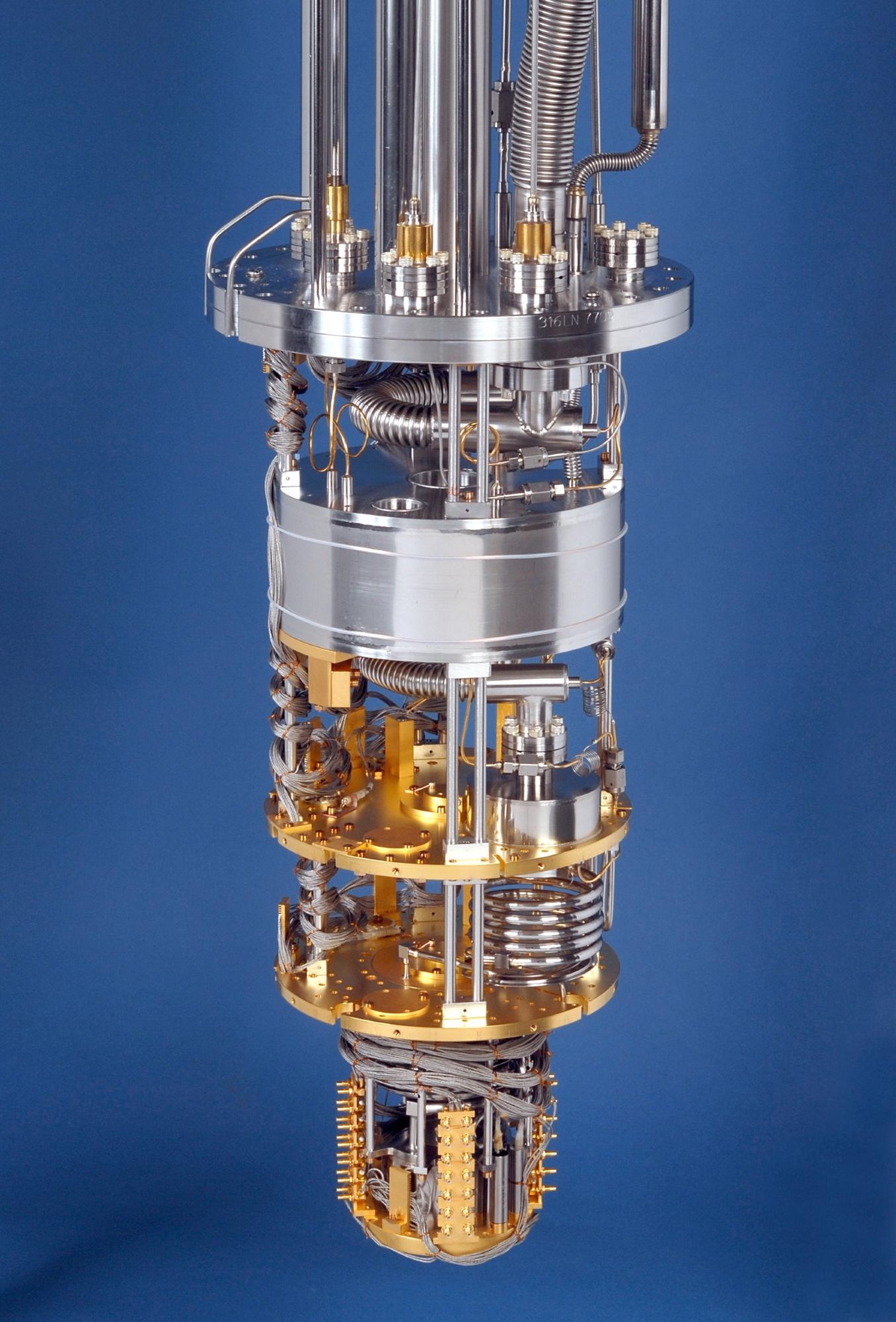After the pioneering “A 10 mK Scanning Probe Microscopy Facility” developed by JanisULT for the National Institute of Standards and Technology (NIST) [review of Scientific Instruments, 81, 121101 (2010)], JanisULT has effectively designed yet another top-loading mK STM dilution refrigerator (DR) for Korea-based Samsung Advanced Institute of Technology (SAIT) with many improved design and performance features in comparison to the previous system.
The SAIT system has 1.5″-diameter central access into the UHV space and contains a 15.5 Tesla superconducting magnet. Through a top manipulator, the massive bore-central access helps translate an STM with an in-situ-prepared specimen and probe tip into the magnet center without warming up the system to more than 4 K.

Image credit: JanisULT
Listed below are other novel features of the SAIT system:
- Extensive coaxial cables and UHV compatible wires have been installed to accommodate the unique applications of users
- Depending on the experience with the NIST system, the SAIT system uses a Joule-Thomson (JT) stage for mixture condensation together with the 1K pot
- An easy-to-use mechanical heat switch has been installed to enable rapid pre-cooling of the DR stage
- JanisULT automated gas handling system (GHS2) equipped with an oil-free Roots pumping station
- Several shutters have been installed to obstruct the infrared radiation heat load
The SAIT system has been effectively deployed on-site and has achieved the following performance specifications:
- The mixing chamber has achieved a base temperature of 6.6 mK for every CMN sensor calibrated with the fixed superconducting point device (FPD)
- The solenoid has achieved the highest magnetic field of 15.5 T at 4.2 K with DR at a base temperature
- Over 300 µW at a cooling power of 100 mK has been realized
- To demonstrate the performance and atomic resolution of the ULT STM, a certain user has been learning graphene and graphite to date; now, a “standard” superconducting sample can be utilized to quantify the BCS gap and find out the electronic temperature
According to the user, “We now have a UHV ultralow temperature scanning probe microscope working with a base temperature of 6.6 mK and the maximum magnetic field of 15.5 T.”
Other configurations, such as bottom sample loading versions, are also available.